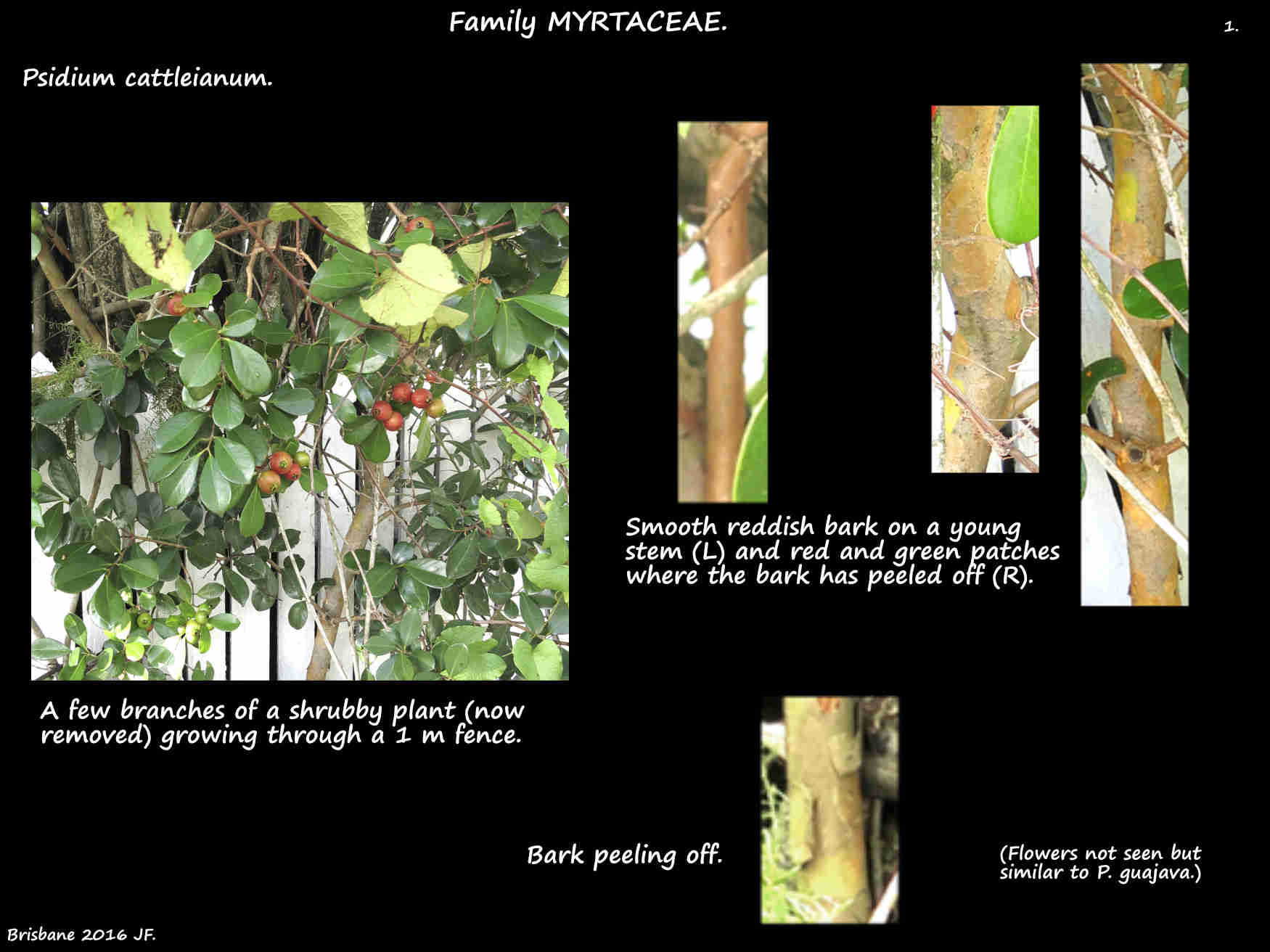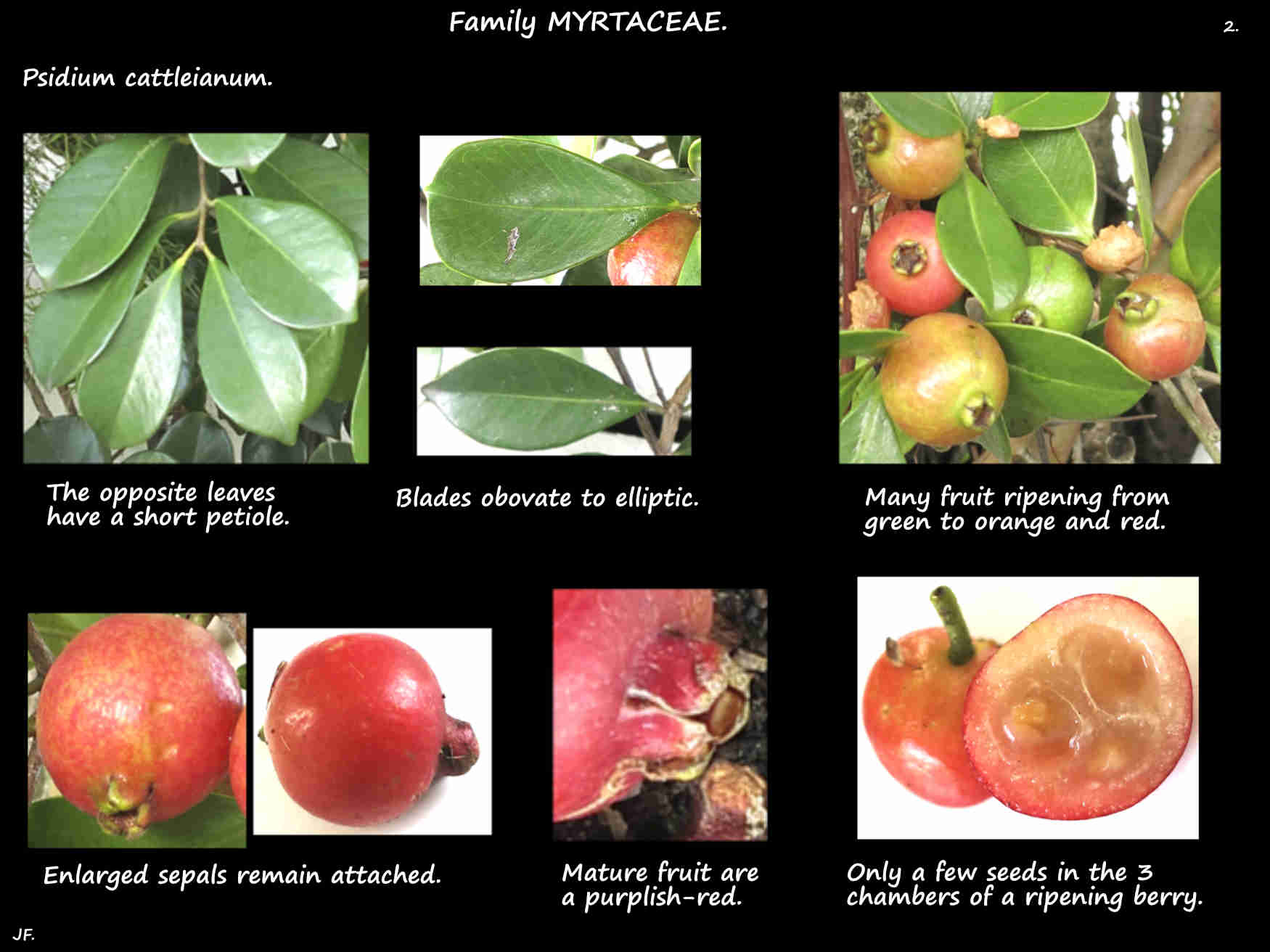Psidium cattleianum.
P. cattleianum (P. cattleyanum) is known as the Red Cherry, Purple, Small or Strawberry guava.
It is naturalised in Queensland and is an invasive weed in the Brisbane area.
They can be dense evergreen shrubs around 3 m high with many branches from the base.
These grow rapidly and can form dense thickets.
They can also grow into small trees up to 8 m high.
Young brown, green or red stems are round and have smooth bark that sometimes has a few hairs.
The grey to brown bark on the trunk and older branches peels off in large flakes exposing a mottled layer below.
The simple shiny leaves are opposite and decussate.
On petioles a few mms up to 1 cm long the blades are up to around 10 cm long by 5 cm wide.
The blades are ovate to obovate or sometimes elliptic or oblong.
The tip is rounded or slightly pointed, the base wedge-shaped and the edge is smooth.
The upper surface is dark green and the lower surface is paler.
There are no hairs but oil glands are present.
The midrib is prominent at the base and there are 6 to 10 pairs of lateral veins.
The ends of the lateral veins join to form an intra-marginal vein.
Inflorescences are a single axillary flower or rarely there may be 2 or 3.
Flowers, on a pedicel around 5 mm long are said to be 2.5 cm across.
(They are very similar to those of P. guajava illustrated under that section.)
The 5 green sepals are 4 mm long.
The 4 (5) obovate white petals are around 5 or 6 mm long and wide.
There are many stamens with white filaments and yellow anthers.
The inferior ovary has 4 (3 or 5) locules and a single style with a green stigma.
The many rounded berries, with the sepals still attached are up to 3 or 4 cm across.
They mature from a dark green to a red or purplish-red.
The whitish flesh has a few to many 3 mm long hard brown kidney-shaped seeds.
In the right conditions they may flower and fruit 2 or 3 times a year.
J.F.



